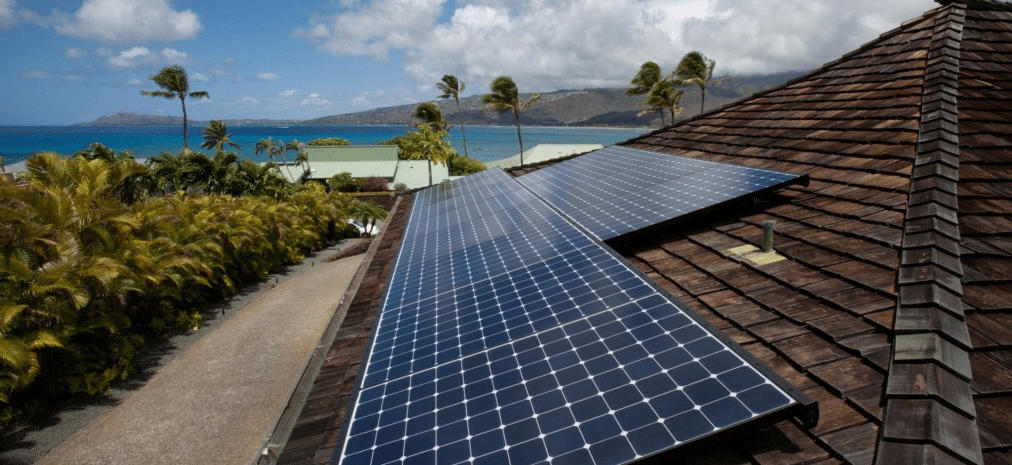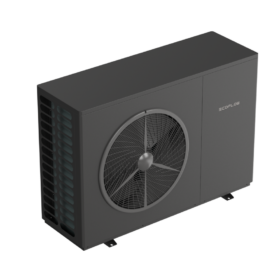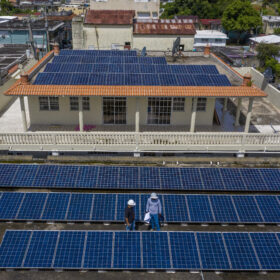The Hawaiian Electric Industries, the parent company of Hawaii’s investor-owned utilities, has officially kicked off the second phase of its renewable energy procurement agreement, whose roots date back to 2017.
Of the Hawaiian Islands, phase 2 procurement focuses on Oahu, Maui and Hawaii, with the former two given clear renewable generation and battery storage targets, while Hawaii’s figures are a bit more up-in-the-air.
All of the energy and capacity designations in this request for proposals are made in annual MWh for generation, while the accompanying storage is outlined in MW and MWh. The proposed RFP calls for Oahu to add 1,300,000 MWh of renewable generation, as well as 200 MW of storage (438,000 MWh). For Maui, those numbers are 295,000 MWh generation and 40 MW of energy storage (58,000 MWh). Hawaii will add somewhere between 70,000 and 444,000 MWh generation, with a ballpark of 18 MW of battery storage.
Using average capacity factors for Hawaii, the actual MW figure – how much generation the utilities are seeking – can be extracted. For Oahu, that figure is just over 148 MW. Maui isn expected to be on the receiving end of 50 MW, while Hawaii’s deployment is unclear so far and will be somewhere between 8 and 51 MW.
Another odd piece of this RFP is the storage seems to be more paramount of a goal than the renewable generation. This is supported contextually by the previous mention of energy figures, and by some wording in the RFP.
Page 15 of the document* reads:
Finally, the commission encourages the Companies, in conducting their portfolio evaluation and selection process, to ensure that stand-alone energy storage charged with fossil fuels is the last resort in meeting any capacity needs.
What this is showing is that, even though this is an RFP partly for renewable generation, storage deployment is so paramount that it can be done even if the only energy to feed into it is fossil-fired, though that is by no means an ideal outcome.
What this does is lead to the belief that this RFP is being done with grid management paramount in mind. Hawaii (the state now, not just the island) already gets a significant portion of its electric load from solar (11%, according to SEIA), and that’s just one of the renewable sources available on the islands. What this does is create a period of strain inn the early evening, when generation starts to wind down just as electricity demand begins to spike up. What the widespread deployment of battery storage does is reserve the electricity from earlier in the day when generation is at its max and demand is relatively low and easily met by generation. This reserved electricity can then be deployed a few hours later during that afternoon strain, with the ultimate goal being to eliminate that strain. This process is known as “load shifting,” and the batteries allow for earlier-generated energy to be shifted to meet peak demand.
We’ve seen this in other island chains and island nations, like Puerto Rico. The difference is that in Puerto Rico the driving force behind storage for grid reliability is disaster recovery, whereas in Hawaii, as was said, it’s for demand response.
In any event this RFP is good news for Hawaii, as the nation’s leader in partnering solar with storage gets set to add over 200 MW of renewable generation and nearly 260 MW of battery storage.
*The document has been consistently slow to load and may take a few minutes to come up in full.
This content is protected by copyright and may not be reused. If you want to cooperate with us and would like to reuse some of our content, please contact: editors@pv-magazine.com.








By submitting this form you agree to pv magazine using your data for the purposes of publishing your comment.
Your personal data will only be disclosed or otherwise transmitted to third parties for the purposes of spam filtering or if this is necessary for technical maintenance of the website. Any other transfer to third parties will not take place unless this is justified on the basis of applicable data protection regulations or if pv magazine is legally obliged to do so.
You may revoke this consent at any time with effect for the future, in which case your personal data will be deleted immediately. Otherwise, your data will be deleted if pv magazine has processed your request or the purpose of data storage is fulfilled.
Further information on data privacy can be found in our Data Protection Policy.